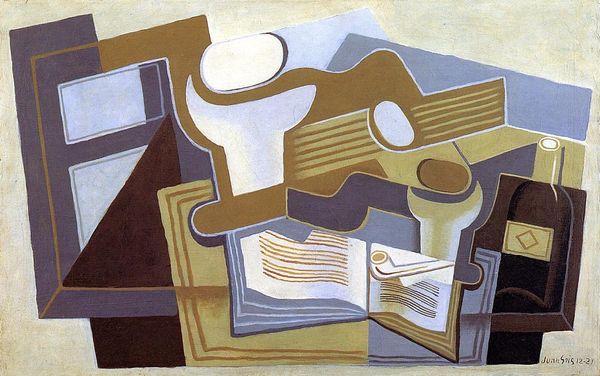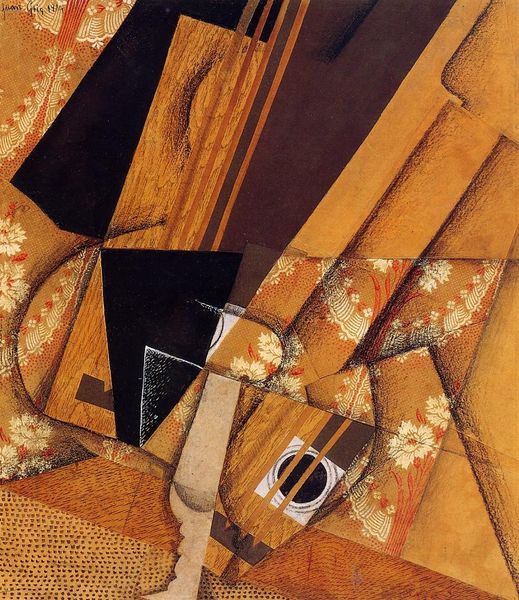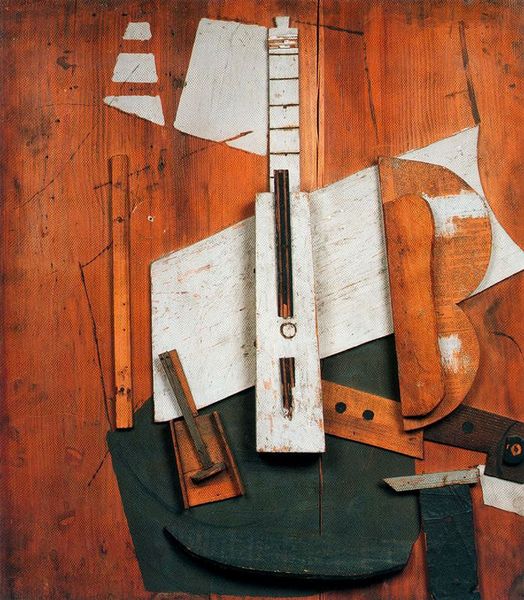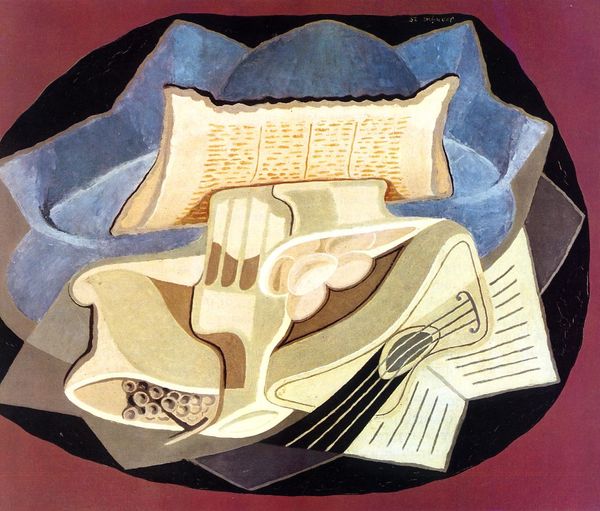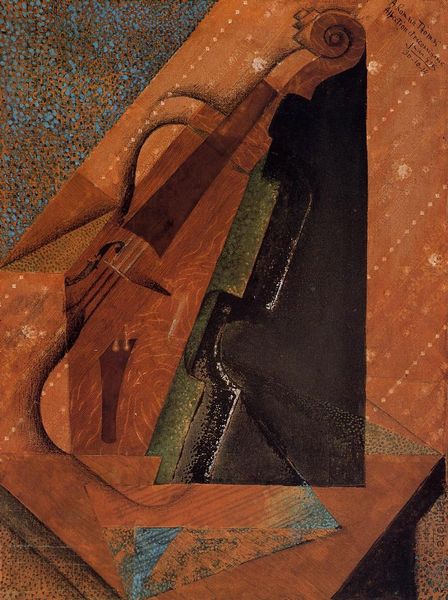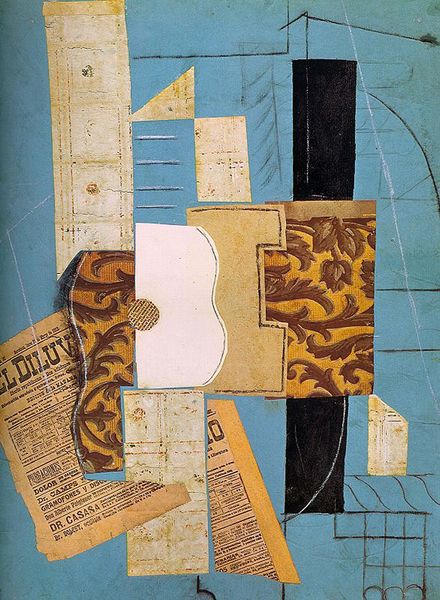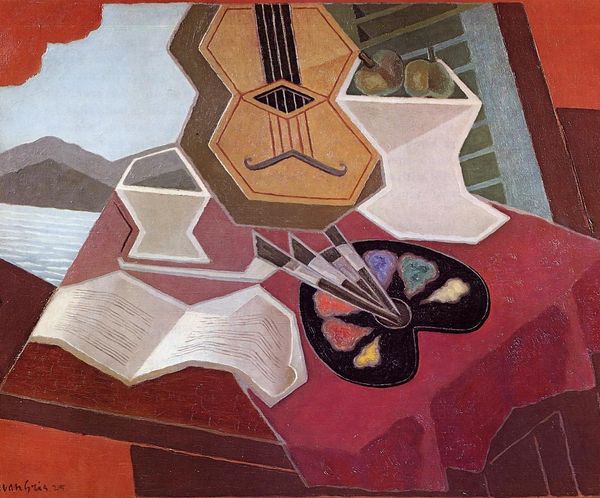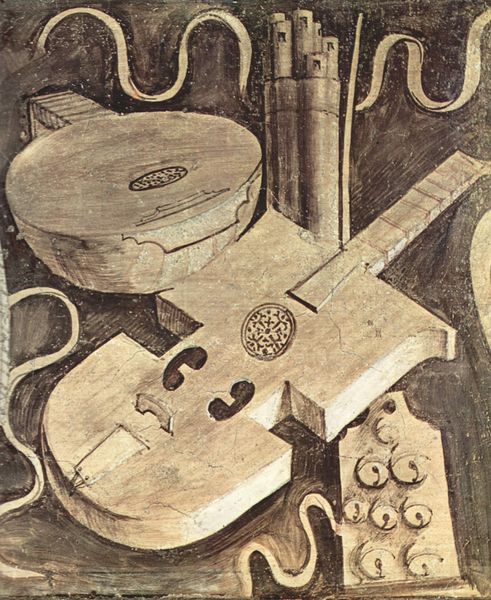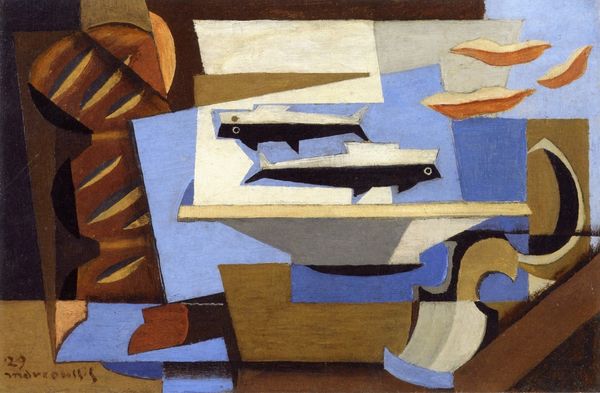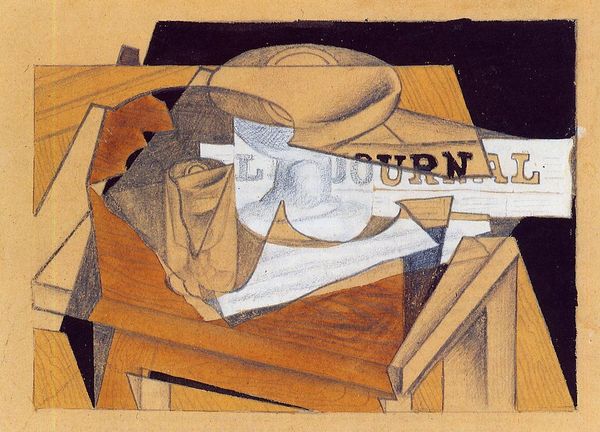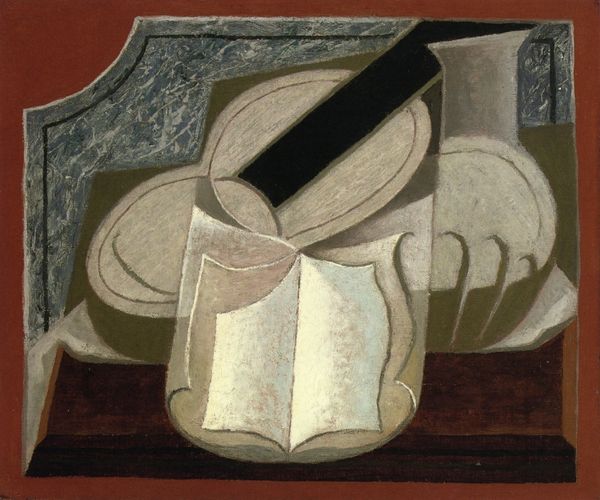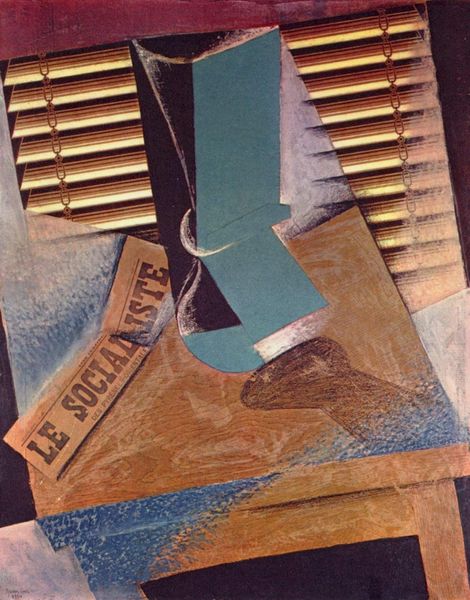
oil-paint
#
cubism
#
oil-paint
#
oil painting
#
geometric
Dimensions: 73 x 92 cm
Copyright: Public domain
Editor: So, here we have Juan Gris's "The Guitar with Inlay" from 1925. It’s an oil painting, a Cubist still life. It strikes me as almost… musical, with all the geometric shapes harmonizing somehow. What do you see in this piece? Curator: It is certainly a harmony of forms. Notice how Gris doesn’t just represent objects; he deconstructs them and reassembles them in a way that speaks to the idea of memory. Consider the guitar: a symbol often associated with merriment, passion. The fractured image speaks to fragmented experiences. Do you agree? Editor: Yes, I see what you mean. The guitar, along with the other objects, is broken up, and re-ordered almost like a shattered mirror. There’s that suggestion of time collapsing. It isn't static. Curator: Precisely. And how do you feel that plays with the emotions it creates for you? Editor: Well, if the image is disrupted in this way, is Gris trying to tell us that even something happy has another side to it? A sadness, or… or the possibility of things falling apart? Curator: I'd suggest we might explore if that disruption is entirely negative. Look how the striped cloth acts as an anchor. The bowl of grapes provides warmth with its colours. While the items are ‘broken’, there's comfort and resolution offered too. It feels celebratory despite the breakdown of form. Editor: I never thought about the comforting aspects, seeing mostly disjointed parts. I suppose it highlights how the interpretation of symbols is deeply personal. Curator: Exactly. It's this interplay between the familiar and the fragmented that makes it resonate across generations, culturally and emotionally. The painting holds space for duality in an incredibly poignant way.
Comments
No comments
Be the first to comment and join the conversation on the ultimate creative platform.
